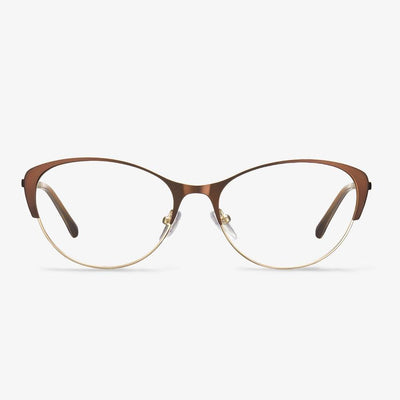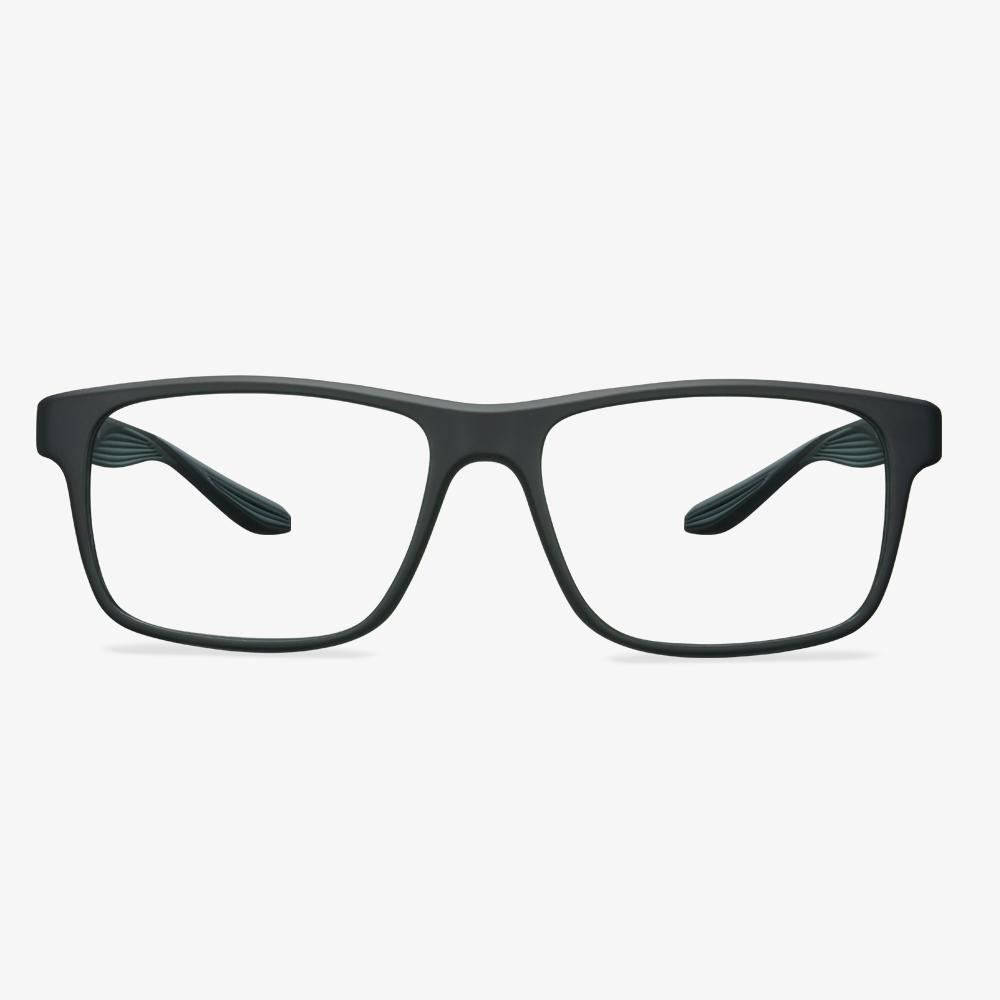Progressive Lens
Standard progressive lenses are multifocal lenses with three observation areas, farsightedness, intermediate vision, and nearsightedness. Unlike bifocals, there are no visible lines between each viewing area. They have a seamless, invisible design, where the optical power changes 'gradually' throughout the lens. Many people confuse 'bifocal' or 'trifocal' with 'progressive' but remember that bifocals and trifocals have visible lines in the lens, while progressive lenses do not. Because progressive lenses have no lines in the lens, they are more popular multifocal lenses than bifocal lenses.
The main observation area of the progressive lens is a far distance, the smaller area at the bottom of the lens is used for myopia, and the middle area in the middle is smaller. Standard progressive glasses are very suitable for general purpose glasses, focusing on hyperopia activities (such as driving and walking) and sufficient area in the lenses for nearsighted activities (such as reading and computer use). The left and right sides or 'convex corners' of the lens are deliberately blurred to achieve an invisible design. The clearest line of sight in the gradual process is from the center to the top of the lens.
How long does it take to get used to progressive lenses?
Because the adjustment of each eye is different, so there will be some differences in the adaptation period. It usually takes about two weeks to get used to it. Probably many young people are familiar with this kind of lens, so they adapt to them for only a week or so and can restore the normal visual effect. If it's been two weeks and you still feel that you can't see clearly, or you have the feeling of nausea, etc., then you need to test and adjust. You need to go to the hospital to see the specific case, to find out whether it is a quality problem of the sunglasses, or there are some artificial reasons. If there is a problem, we should also replace the lenses in time, otherwise, it may lead to the problem of visual fatigue. Therefore, it is still necessary to promptly confirm the case of optometry, and then replace the appropriate glasses.
Cellulose Acetate
Acetate is a kind of thermoplastic resin obtained by esterifying acetic acid to acetic anhydride under the action of a catalyst. Acetate is resistant to water, gasoline, mineral oil, and lipids, weak alkaline solutions, and acids, excellent weather resistance, not resistant to ethanol, strong acids, and strong alkaline solutions. During thermoforming, it is very necessary to dry the material before forming. Acetate was born in the early 20th century, and was successfully trial-produced and industrialized by the UK in the early 1920s. At present, it is the second-largest variety in cellulose fiber after viscose fiber. Acetate can be used to make textiles, cigarette filters, film bases, and plastic products.
How to see if the lenses are too high?
- Look at an object in a distance 65 feet away or more.
- If you can’t see it clear, keep your eyes on the object and lower your chin. Check whether you can see clearly while looking through a more upper part in the lens than your lenses are too high.
Then you need to watch the difference in the blurriness on the contours of the roadsign.
Now, we will show you how to check if your lenses are too low. Hold something you want to read in your hands and lower your look with your eyes. Do not move your chin down as you look down. If you can’t read without lifting the glasses, the lenses are too low.
Tortoiseshell glasses are abundant in variety.
Tortoiseshell glasses frame is quite rich in color. Black, brown, light gold, and other colors are covered, with black spots scattered at random distribution. The overall color is dark. Regardless of men and women, it will add a noble and steady feeling to the wearer. For many people, today's tortoiseshell glasses wear, is not only for the pursuit of its own comfort. It is more as a kind of decoration, showing their extraordinary taste.
Protect the lenses of your safety glasses.
Scratches can be caused by damage at work, aging, improper care, improper cleaning, or improper storage. Whatever the cause of a scratched lens can affect vision quality through the polycarbonate, causing eye strain. Make sure the safety glasses lenses are replaced in time when they are scratched.
Is Anti Glare Worth It?
Is anti glare worth it? To answer this question, you need to know the benefits of the anti glare glasses first. Anti reflective coating and anti glare coating offer many benefits and are definitely worth the extra cost, especially if you find yourself bothered by glare. They can help you see better, look better and feel better.
Here, we will list some of the benefits of the anti reflective coating.
- They can improve your vision by reducing bothersome reflections and glare.
- They can also provide comfort during prolonged computer use as the glasses for computer use.
- They improve visual acuity by allowing more light to reach your eyes.
- They can reduce the effect and symptoms of digital eye strain.
- They make your eyes more visible behind your lenses.
- They provide less glare when driving at night.
So, is anti glare worth it? From the above information, you can find that anti glare glasses or anti reflective glasses are worth the cost.











































